Sonova USA WFT1 Wireless Functional Test Device (WFT) User Manual
Phonak Inc Wireless Functional Test Device (WFT)
User Manual
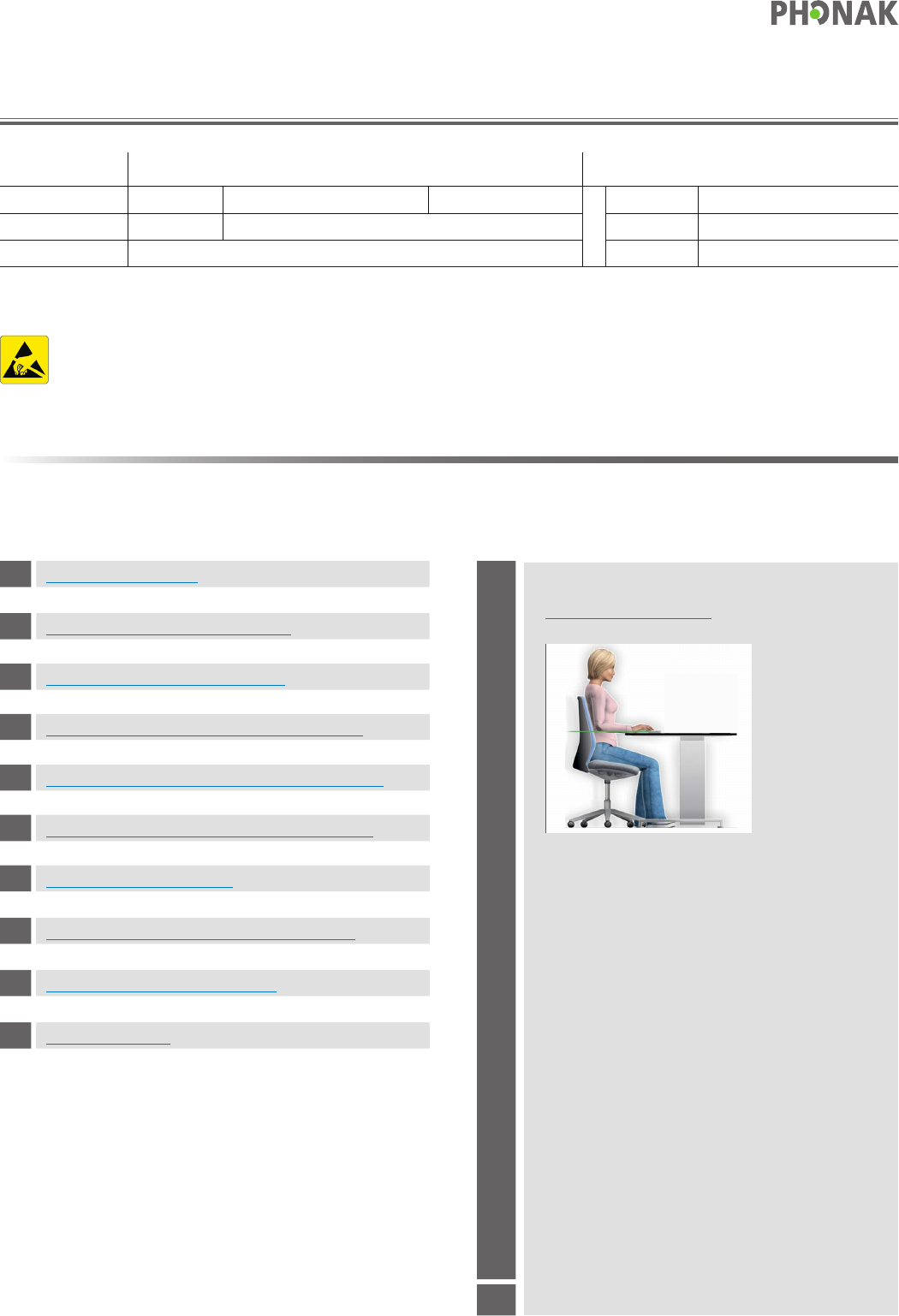
Work Instruction / User Guide
Wireless Functional Test Device
File: 000.000.015.286.pdf Version 2
Page: 1 of 15 Number of local copies:
Version: 1.00
Written: 2015-04-10 11bwestcott
Date of print: Uncontrolled copy if printed Approved: 2015-04-20 1bkrajnovic
Contact: technical.support@phonak.com Released: 2015-04-21 11zbudrovic
Health and Safety
Table of Contents
General Description
1
Wireless Functional Test Device
2
Wireless Functional Test Setup
3
Wireless Functional Test Device Self Test
4
Wireless Functional Test Device Test Modes
5
Wireless Functional Test Device Operation
6
Compliance Information
7
Information and Description of Symbols
8
Important Safety Information
Revision History
Electrostatic discharge sensitive devices
Take ESD precautionary measures whenever handling electronic devices
Workplace Ergonomics:
Adjust table and chair to elbow height.
Elbow height = table
The angle between your thigh and lower leg should
be at least 90°.
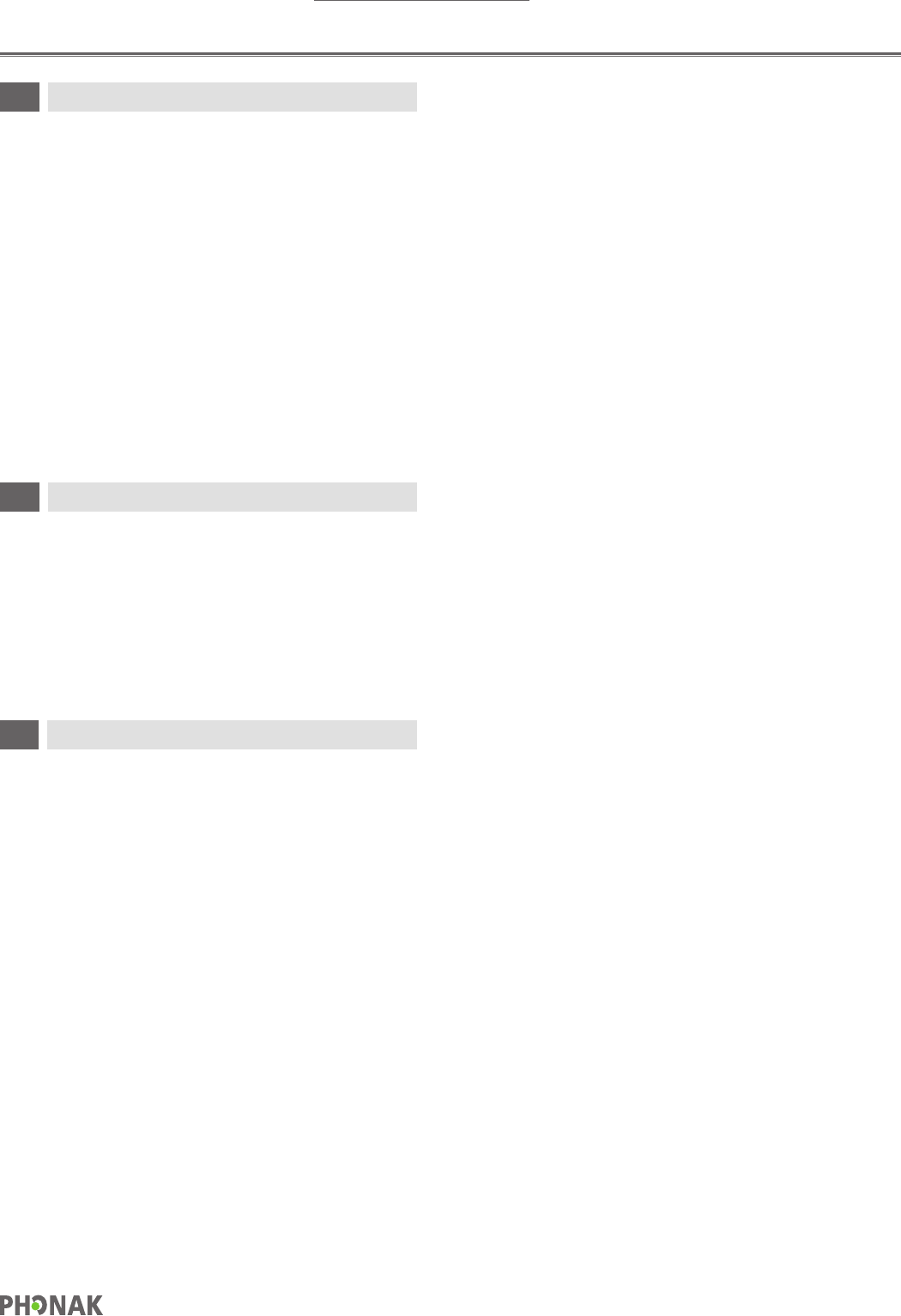
File: 000.000.015.286.pdf Version: 2
Title: Work Instruction Wireless Functional Test Device Page: 2 / 15
The Wireless Functional Test (WFT) device is used to perform a wireless functional quality test (Go/NoGo test) of the proprietary HIBAN link (10.6
MHz) by generating an audio stream from the WFT device to a hearing instruments or compatible Digital Wireless Accessories (DWA).
WFT device interacts as a simple remote control and can be used to test remote control functionality by decreasing the volume and changing the
program of a hearing instrument.
Following platforms are supported:
• P3: Palio 3 Platform with a new chip realizing the HiBAN 2 with 8-DPSK (DQPSK) modulation.
All hearing aids starting by Audeo V and Digital Wireless Accessories of the “II” generation.
• P2: Palio 2 Platform with a chip realizing the HiBAN 1 with F1D / FSK modulation. All wireless hearing aids till Audeo V.
Please read this user guide carefully to benefit from all the features of the WFT.
The WFT device is designed for trained and certified custom product manufacturing and repair centers within Phonak and Unitron Group Companies
(GCs) and by qualified distributors.
The WFT device is used for performing a functional test of the HIBAN link of a Device Under Test (DUT).
The WFT device is not capable to program nor manipulate any setting of hearing instrument or a DWA.
The WFT does not give pass/fail output. Rating needs to be done by operator.
Purpose
This document is an outline of the user interface menu for the Wireless Functional Test (WFT) of the WFT device.
This test is compatible with both Palio 2 (P2) & Palio 3 (P3) hearing instruments (HI) & Palio 3 Digital Wireless Accessories (DWA).
There are different tests available for the two platforms due to the wireless processor used.
Palio 2 HI remote control test & the Palio 3 remote control test & wireless functional test for both P3 HI & P3 DWA.
The HI will always have a side designation, left or right. The WFT device is able to test the HI without the operator selecting a specific side.
The WFT device will automatically connect to a DWA under test regardless of the fitting side status, left or right, or binaural.
General Description
Intended Use
Wireless Functional Test
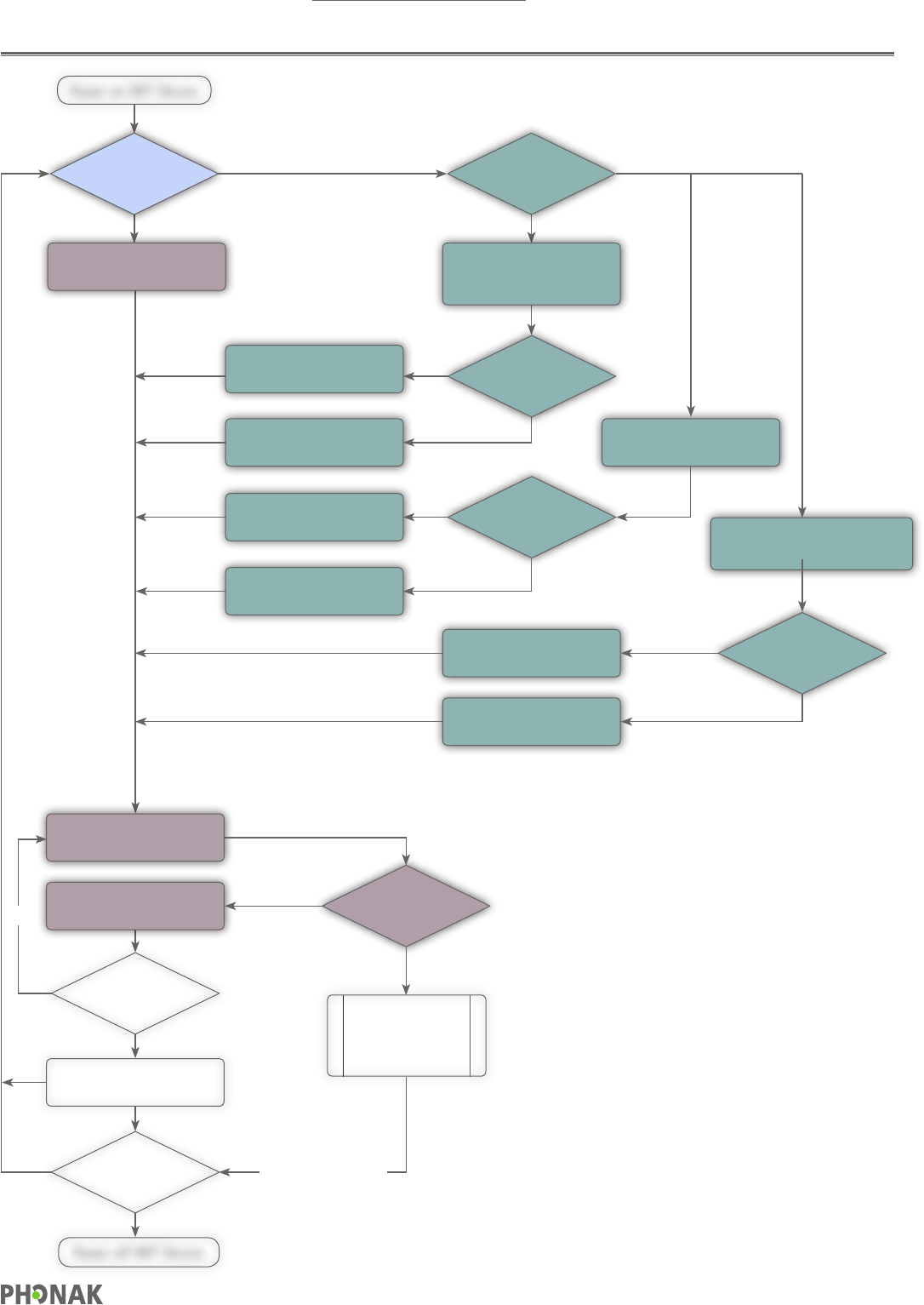
File: 000.000.015.286.pdf Version: 2
Title: Work Instruction Wireless Functional Test Device Page: 3 / 15
Power on WFT Device
Power off WFT Device
Select Platform
Platform
change needed
for next order
All devices
tested
Palio 3
Select Test Mode
P3 HI Select
Test Mode
P3 DWA
Select Test Mode
HI Passed Test
P3 CROS
Select Test Mode
Palio 2
HI Remote Control Test Palio 3
Hearing Instrument Test
P3 DWA
Remote Control Test
Start HI Test
P3 DWA
Wireless Functional Test
End HI Test Yes
No
No
Return to Select Platform
menu for the next test
Test the next device
HI needs repair action.
May be kicked out to
troubleshooting
P3 HI
Remote Control Test
P3 HI
Wireless Functional Test
Palio 3
CROS Test
Palio 3
Digital Wireless Accessory Test
P3 CROS
Remote Control Test
P3 CROS
Wireless Functional Test
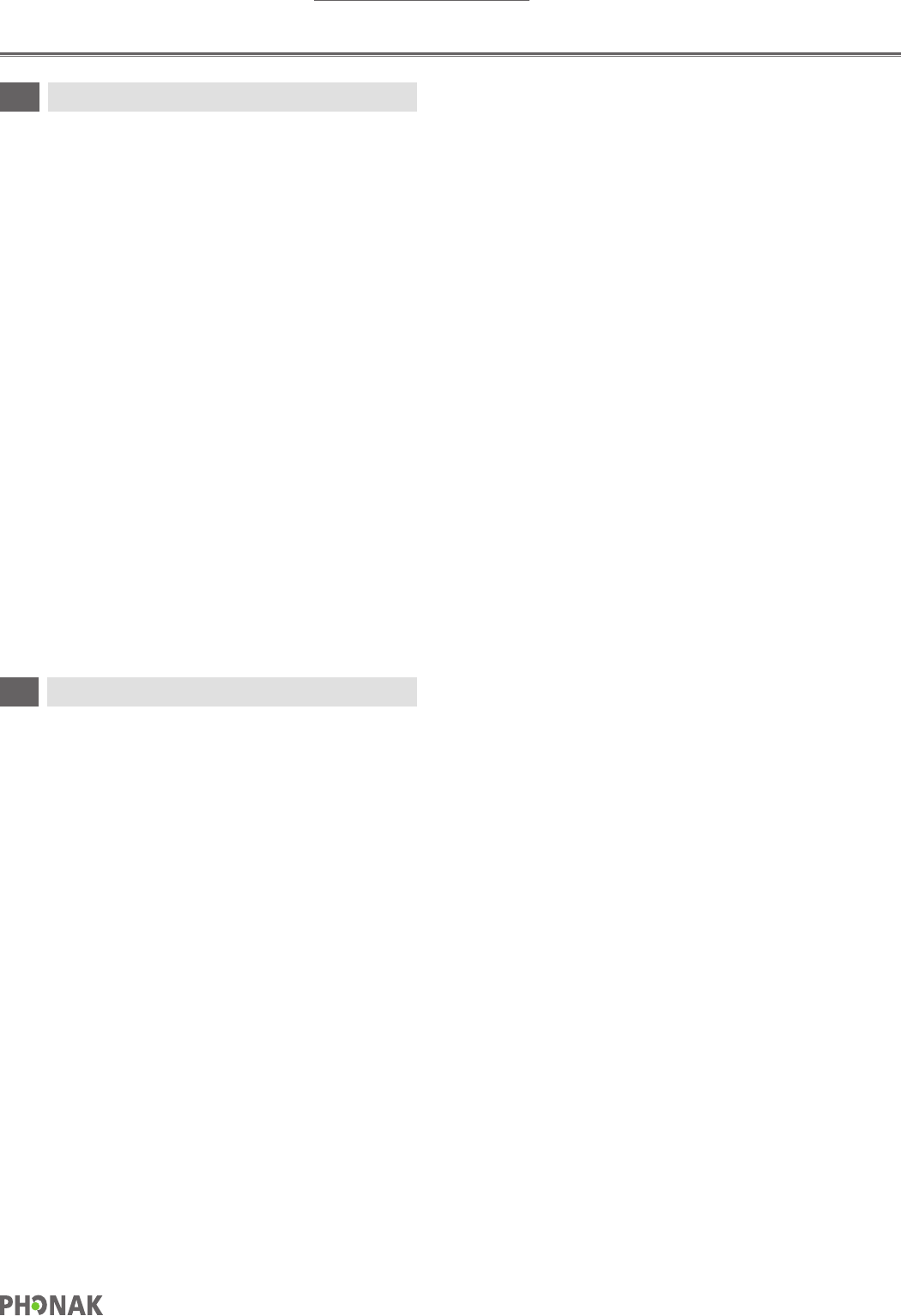
File: 000.000.015.286.pdf Version: 2
Title: Work Instruction Wireless Functional Test Device Page: 4 / 15
P2 & P3 HI Remote Control Test
The WFT device will send a RC command to the HI.
The operator will listen to the HI to confirm the correct function. i.e. Change Program – HI changes program.
P3 HI Wireless Functional Test
The WFT device will send a sine wave to the HI.
The operator listens to the WFT device output via a Stethoclip & judges the quality of the audio streamed to the WFT device.
P3 DWA & P3 CROS II Remote Control Test
The WFT device will receive the remote control command from the DWA or CROS II & display what the command was.
The operator will compare the displayed result to the action they performed. i.e. VC up is pressed, WFT device displays "Volume UP".
P3 DWA & P3 CROS Wireless Functional Test
The DWA or P3 CROS II streams an audio signal to the WFT device.
The operator has to judge the quality of the audio based on what he/she hears at the receiver of the WFT device.
Hearing Instruments
The HI can have either a generic or product firmware loaded.
In either FW the default settings (also called manufacturing settings) should be set.
In the default settings configuration all audio inputs (omni mic, dir mic, T’coil etc.) & all user controls are active.
The HI is set to full on gain output, therefore the volume remote control command is to decrease the HI volume.
The program change command is to toggle to the next program in a loop. Once the last program is reached the HI will change to the first program.
Digital Wireless Accessories
For the DWA remote control function to work the client settings must be used.
The remote control can be setup for a monaural or binaural fitting.
For streaming function the DWA can be in a "Generic grouping" or a fitted state.
Regardless of the fitting state of the DWA the WFT device will detect the DWA a stream the audio accordingly.
Failure Test
In the event that a HI or DWA fails the test repair actions are to be taken.
These actions are not in the scope of this document.
Test Preconditions
Functional Test
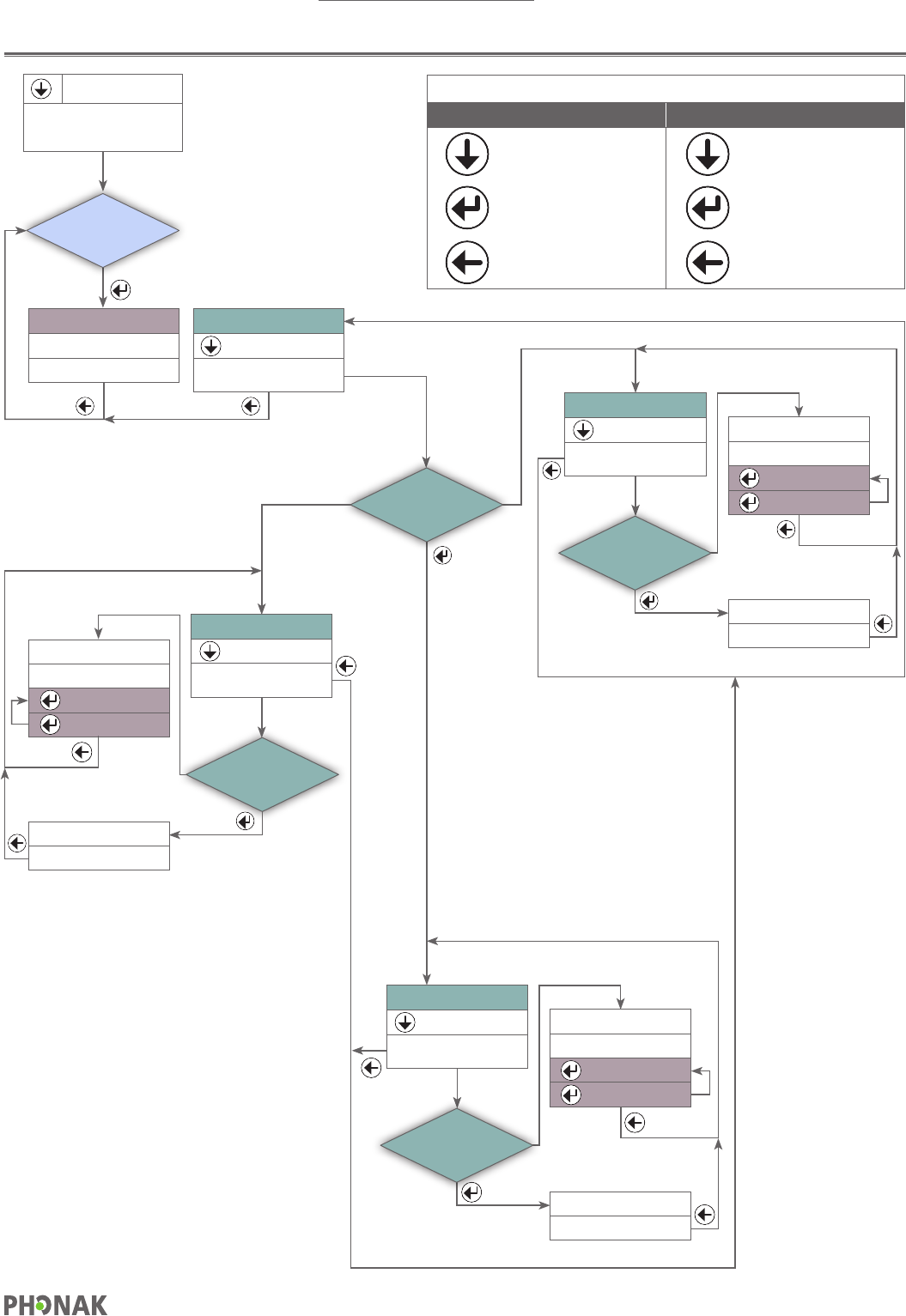
File: 000.000.015.286.pdf Version: 2
Title: Work Instruction Wireless Functional Test Device Page: 5 / 15
Screen display
P3 CROS WFT
Start test
Stop test
Screen display
P3 DWA WFT
Start test
Stop test
Screen display
• Palio 2
• Palio 3
Button Function
Menu functions Test functions
Navigate list Decrease volume
Select Program change / Start /
Stop test
Back to previous menu Back to previous menu
Palio 2
Screen display
P2 HI RC
Palio 3
Screen display
• P3 HI
• P3 DWA
P3 CROS
Screen display
• P3 CROS RC
• P3 CROS WFT
P3 DWA
Screen display
• P3 DWA RC
• P3 DWA WFT
Screen display
P3 CROS RC
Screen display
P3 DWA RC
Select Platform
Select test mode
Select test mode
Select test mode
Screen display
P3 HI WFT
Start test
Stop test
P3 HI
Screen display
• P3 HI RC
• P3 HI WFT
Screen display
P3 HI RC
Select test mode
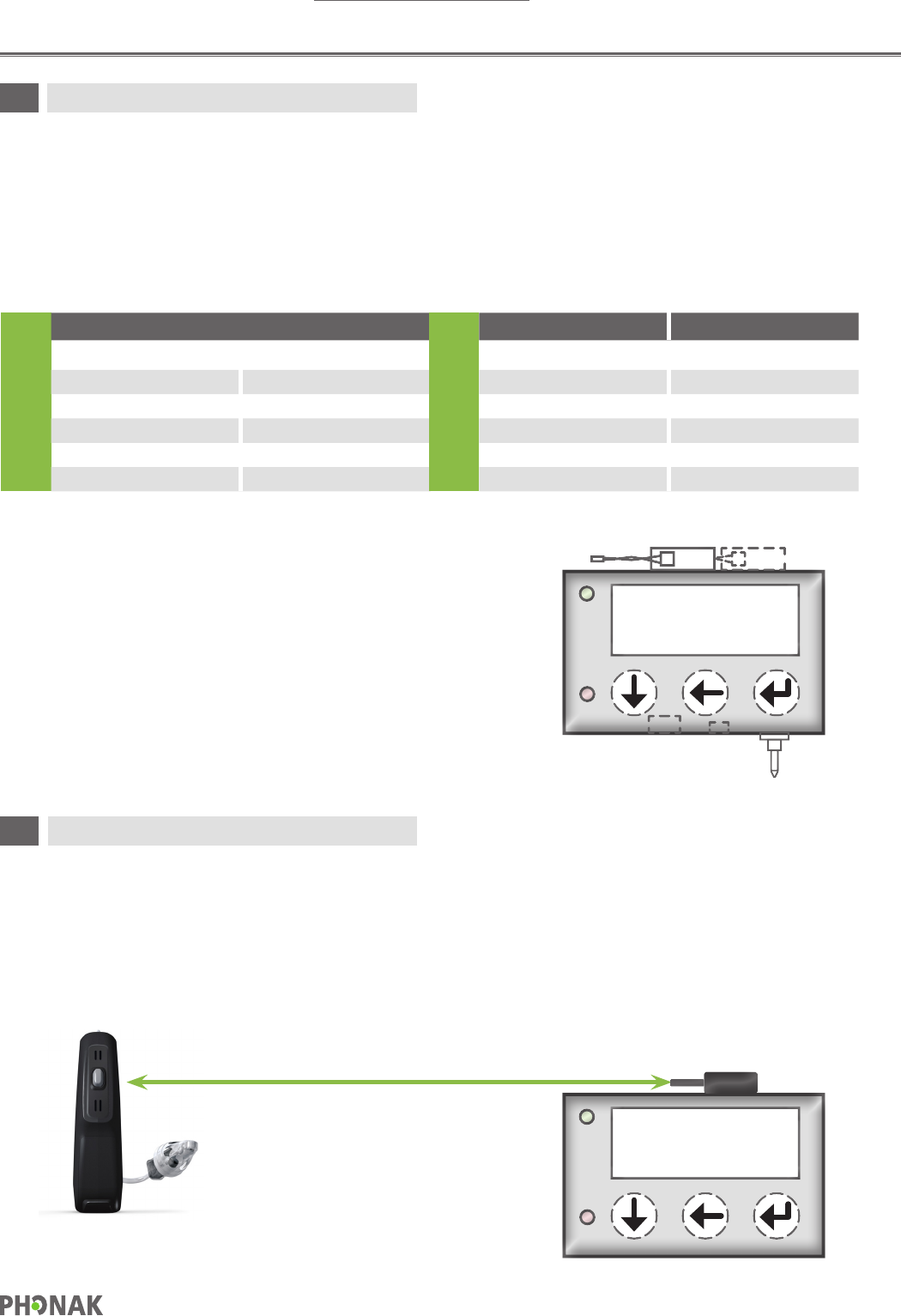
File: 000.000.015.286.pdf Version: 2
Title: Work Instruction Wireless Functional Test Device Page: 6 / 15
The Wireless Functional Test device should be used at any process step to check the wireless function of the hearing instrument
or digital wireless accessory.
For example, diagnose, component exchange & quality control as a part of the repair process & kit preparation or drilling & wiring,
closing & quality control as apart of the ITE new production process.
The WFT device is to replace the Lab myPilot for checking the wireless function of Palio 2 & Palio 3 hearing instruments.
In addition it is also possible to check the function of Palio 3 digital wireless accessories.
The WFT device has a display and 3 touch pads to control the device.
It is powered by a mini USB cable connected to a PC or to the power socket.
There is also an acoustic out to connect a stethoclip to listen to the streamed
audio signal from DWAs & CROS II products.
The WFT device has an external HIBAN antenna which must be connected
to the Palio 2 or Palio 3 socket depending on which platform product is being
tested.
Wireless Functional Test Device
1
Product Compatibility Table
WH22
Palio 2 HI
WH30
Palio 3 HI Palio 3 DWA
Ambra Bolero Audéo V ComPilot II
Solana Virto Bolero V ComPilot Air II
Cassia Naìda Q PilotOne II
Naìda S Sky Q
Nios S Audéo Q
Audéo S
Functional Test
Palio3 / Palio2
POWER
3.3V
LINK
ACT
Marconi
Palio3
Acoustic Out
Mini-Din Mini USB
iWiPro
Palio2
WIRELESS FUNCTIONAL TEST
Wireless Functional Test Setup
2
A template will be provided to produce a control guide for the WFT. The control guide will show the acceptable working range for both Palio2 &
Palio3 hearing instruments. The test distance for the WFT device with hearing instruments is 18 to 22cm.
• Power the WFT device via a mini-USB connected to a free USB port on a computer. Use a powered USB hub if there are no free USB ports on
your computer.
• For a hearing instrument test connect the stethoclip to the HI.
The HI functions correctly within
the control range of 18 – 22 cm
The HI HIBAN antenna & the WFT
device antenna must be aligned
Palio 2
Vol-down Prog
POWER
3.3V
LINK
ACT
WIRELESS FUNCTIONAL TEST
Antenna
Palio2
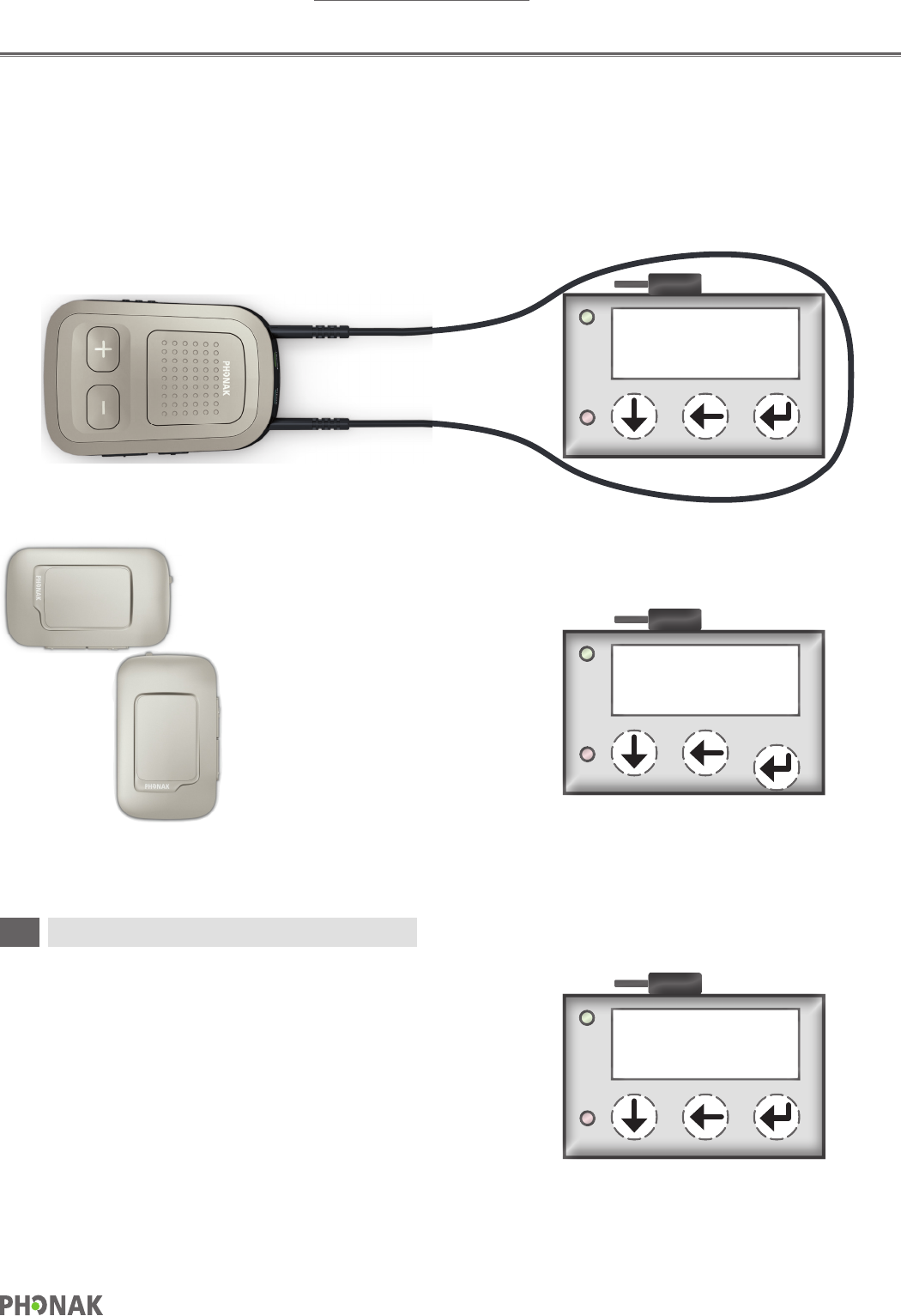
File: 000.000.015.286.pdf Version: 2
Title: Work Instruction Wireless Functional Test Device Page: 7 / 15
The WFT device can be used to test the remote control & the wireless streaming function of the P3 DWA.
• The remote control test distance for PilotOne II & ComPilot II (without neckloop) is still 105cm.
• For the ComPilot II streaming test the WFT device should be placed inside the ComPilot II neckloop.
• For testing the ComPilot Air II for both remote control & streaming function the test distance in 35 cm.
• For a DWA streaming test connect the stethoclip to the WFT device
ComPilot Air II remote control test 35cm
in either direction as shown.
P3 DWA RC
GoTo Next
POWER
3.3V
LINK
ACT
WIRELESS FUNCTIONAL TEST
Antenna
Palio3
P3 DWA WFT
ON
POWER
3.3V
LINK
ACT
WIRELESS FUNCTIONAL TEST
Antenna
Palio3
ComPilot II streaming test, place the WFT
device in the middle of the neck loop
Wireless Functional Test Device Self Test
3
During Boot-up touch all three pads simultaneously to enter the “Self Test” mode.
• - will be displayed in two rows across the LCD display.
• Press any pad to continue.
• Check LED – The “Link” LED is blinking
• Press any pad to continue.
• Audio Check – Clear beep is heard without distortion
• Press any pad to continue.
• Press & Release – touch the pad indicated with the #
• After pressing all 3 pads the self test is complete.
• When “Functional Test – Palio3” is displayed the device is ready for use.
Functional Test
Palio3
POWER
3.3V
LINK
ACT
WIRELESS FUNCTIONAL TEST
Antenna
Palio3
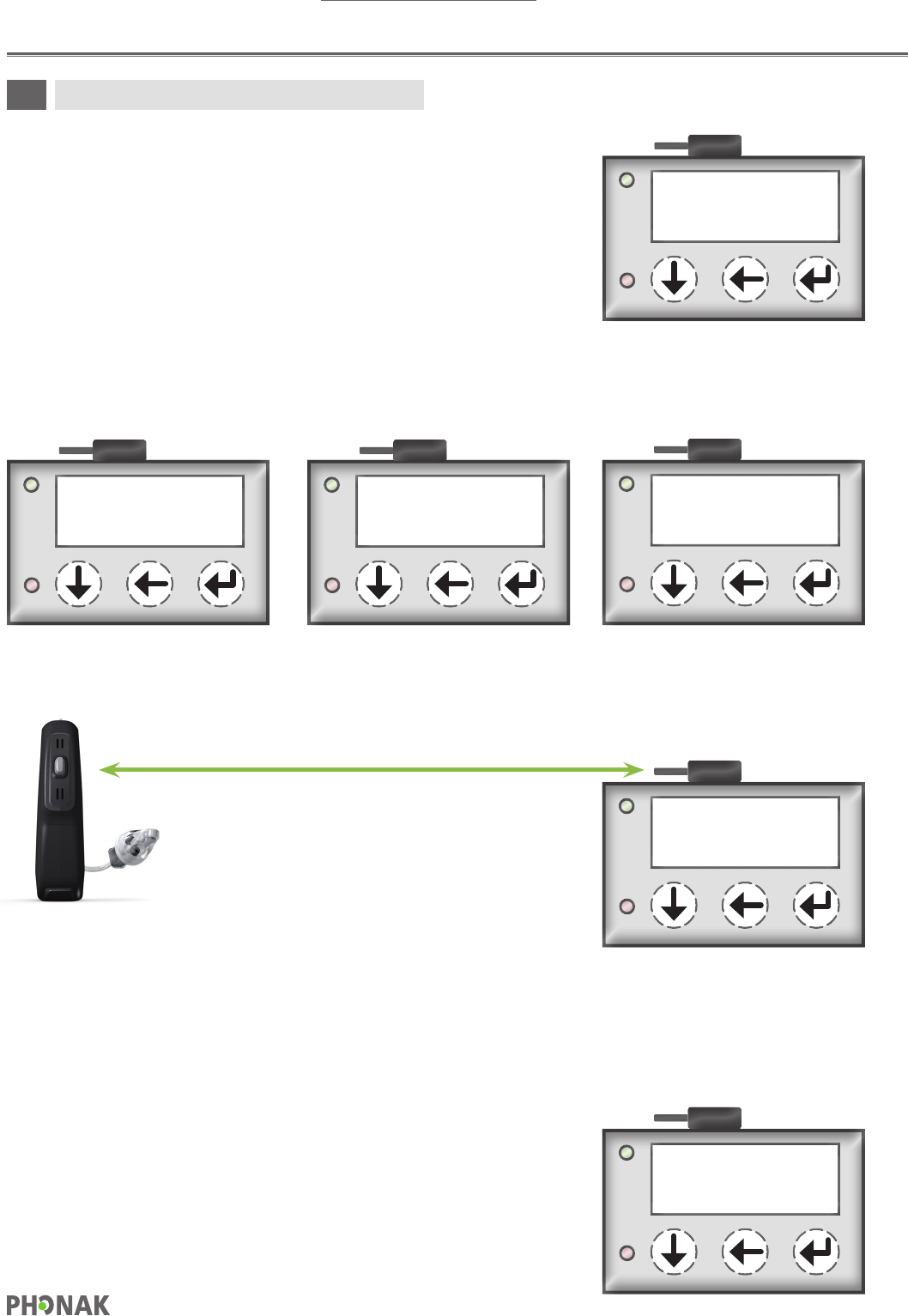
File: 000.000.015.286.pdf Version: 2
Title: Work Instruction Wireless Functional Test Device Page: 8 / 15
DWA RC – Test mode
• Use the remote control buttons on the DWA
• Read the WFT Ddvice display to confirm the button function
P3 DWA RC
GoTo Next
POWER
3.3V
LINK
ACT
WIRELESS FUNCTIONAL TEST
Antenna
Palio3
WIRELESS FUNCTIONAL TEST
P3 DWA RC
Volume DOWN
POWER
3.3V
LINK
ACT
Antenna
Palio3
WIRELESS FUNCTIONAL TEST
P3 DWA RC
Volume UP
POWER
3.3V
LINK
ACT
Antenna
Palio3
Palio3
P3 CROS
POWER
3.3V
LINK
ACT
WIRELESS FUNCTIONAL TEST
Antenna
Palio3
P3 CROS RC
Ready
POWER
3.3V
LINK
ACT
WIRELESS FUNCTIONAL TEST
Antenna
Palio3
Palio 3 CROS
Palio 3 CROS RC
Begin with the P3 CROS RC. For the wireless function test a Stethoclip must be connected to the WFT device to listen to the streamed signal from
the CROS II hearing instrument. Use a good battery, position the CROS II HI within test range before turning on the CROS II HI.
Do not start the test until the CROS II HI is powered on.
Enter the P3 CROS RC test mode.
The WFT device will search for a CROS II hearing instrument.
“Ready” will be displayed once the connection with the HI is made.
If no compatible device is found an error message will be displayed.
Wireless Functional Test Device Test Modes
4
HI RC – Test mode
• Listen to the hearing instrument under test.
• Use the WFT device to decrease the HI volume
• Use the WFT device to change the HI program
WIRELESS FUNCTIONAL TEST
P3 HI RC
Vol-down Prog
POWER
3.3V
LINK
ACT
Antenna
Palio3
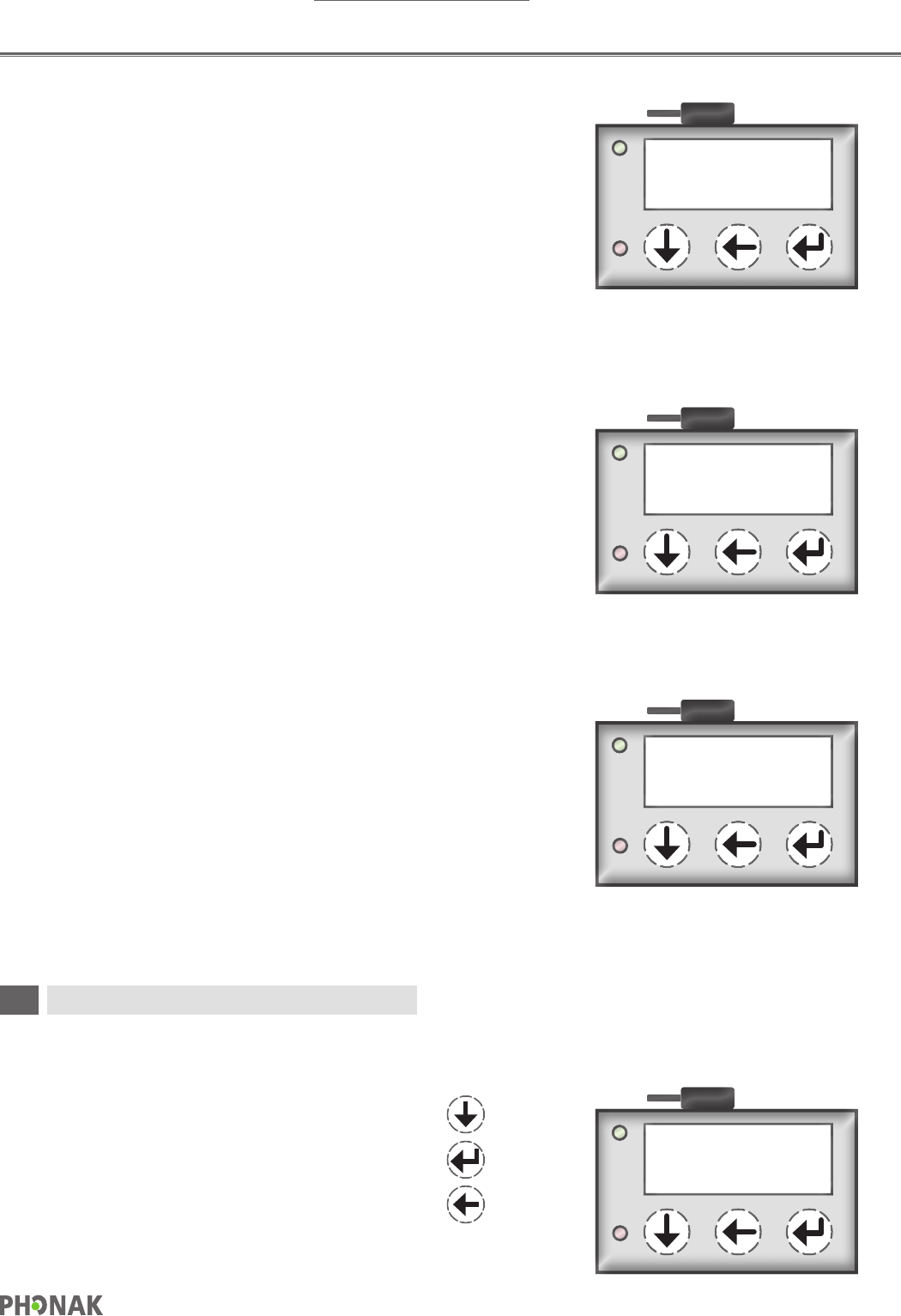
File: 000.000.015.286.pdf Version: 2
Title: Work Instruction Wireless Functional Test Device Page: 9 / 15
P3 CROS RC
Go To Next
Palio 3
P3 CROS WFT
P3 CROS WFT
On
POWER
3.3V
POWER
3.3V
POWER
3.3V
LINK
ACT
LINK
ACT
LINK
ACT
WIRELESS FUNCTIONAL TESTWIRELESS FUNCTIONAL TESTWIRELESS FUNCTIONAL TEST
Antenna
Palio3
Antenna
Palio3
Antenna
Palio3
Palio 3 CROS Wireless Functional Test
To check the remote control function use the user controls on the CROS II HI, PS & VC.
The WFT device will display the received command. i.e. Program button = Go To Next.
Test all available user controls.
Repeatedly pressing the same button will not change the display.
Alternating between user controls is recommended when possible.
Enter the P3 CROS WFT test mode.
The WFT device will search for a CROS II HI & set the CROS device to the streaming program.
“On” will be displayed once the connection made.
“Wait . . . . “ will be displayed during setup.
If no compatible device is found an error message will be displayed.
Due to the noise environment & test set up it might not be possible to clearly hear
the “Streamed audio” from the CROS II HI.
Using you finger lightly rub across the microphone inlets.
Alternatively lightly blow across the microphone inlets to check the streaming function.
Functional Test
Palio3
Wireless Functional Test Device Operation
5
• Use down arrow to scroll between P3 HI & P3 DWA.
• Use carriage return to select.
• Use back arrow to return to the previous menu.
Palio3
P3 HI
POWER
3.3V
LINK
ACT
WIRELESS FUNCTIONAL TEST
Antenna
Palio3
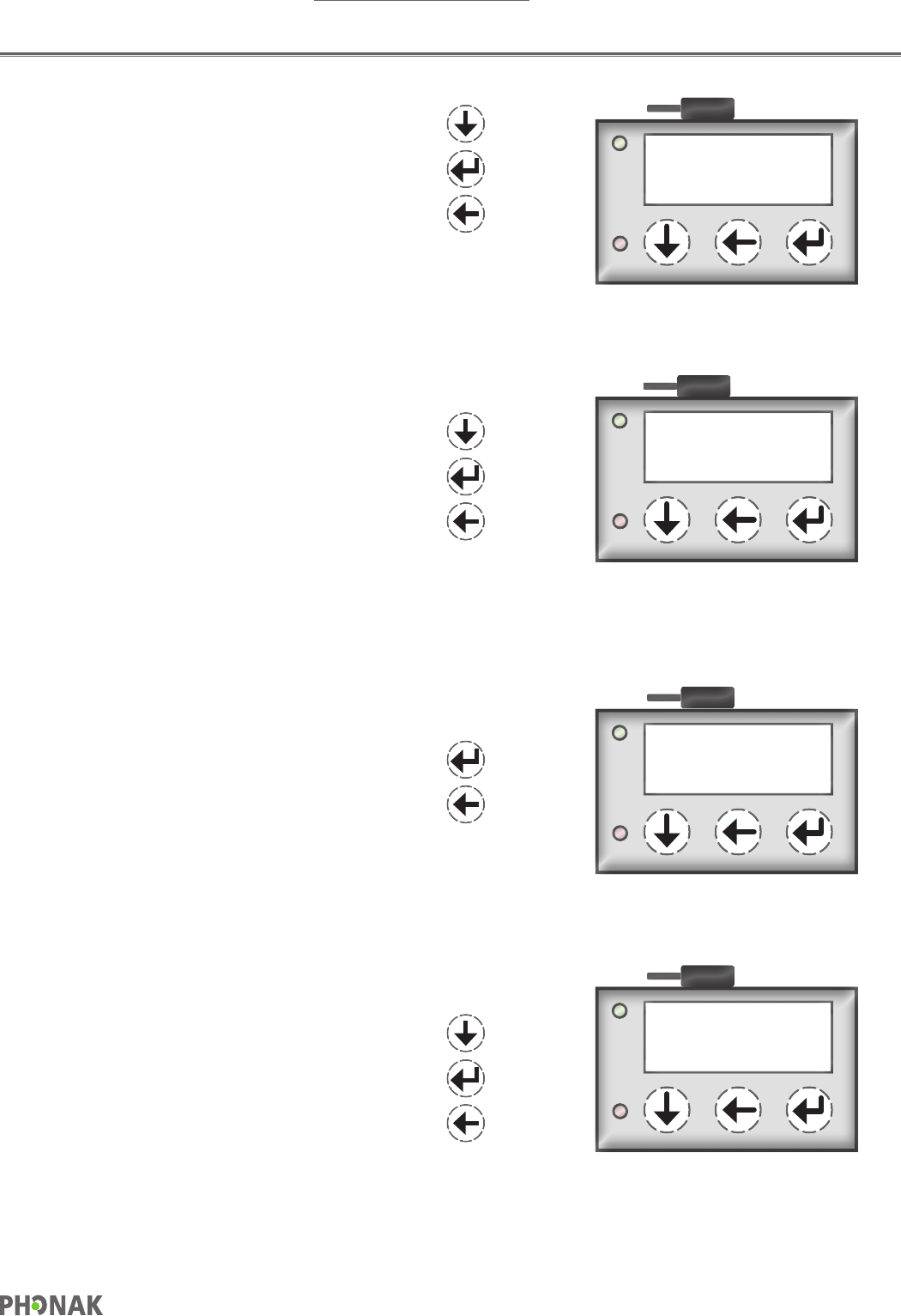
File: 000.000.015.286.pdf Version: 2
Title: Work Instruction Wireless Functional Test Device Page: 10 / 15
P3 HI
• Use down arrow to scroll between P3 HI RC test & P3 HI WFT test.
• Use carriage return to select.
• Use back arrow to return to the previous menu.
P3 HI
P3 HI RC Hearing instrument remote control test
• Use down arrow to decrease the volume.
• Use carriage return to change the program.
• Use back arrow to return to the previous menu.
P3 DWA
P3 DWA RC
POWER
3.3V
LINK
ACT
WIRELESS FUNCTIONAL TEST
Antenna
Palio3
P3 HI
P3 HI WFT Streaming test from the WFT Device to the HI
• Use carriage return to turn on & off the sine stream.
• Use back arrow to return to the previous menu.
P3 HI WFT
On
POWER
3.3V
LINK
ACT
WIRELESS FUNCTIONAL TEST
Antenna
Palio3
P3 DWA
P3 DWA RC Digital Wireless Accessory remote control test
• Use down arrow to scroll between
P3 DWA RC test & P3 DWA WFT test.
• Use carriage return to select.
• Use back arrow to return to the previous menu.
P3 HI RC
Vol-down Prog
POWER
3.3V
LINK
ACT
WIRELESS FUNCTIONAL TEST
Antenna
Palio3
P3 HI
P3 HI RC
POWER
3.3V
LINK
ACT
WIRELESS FUNCTIONAL TEST
Antenna
Palio3
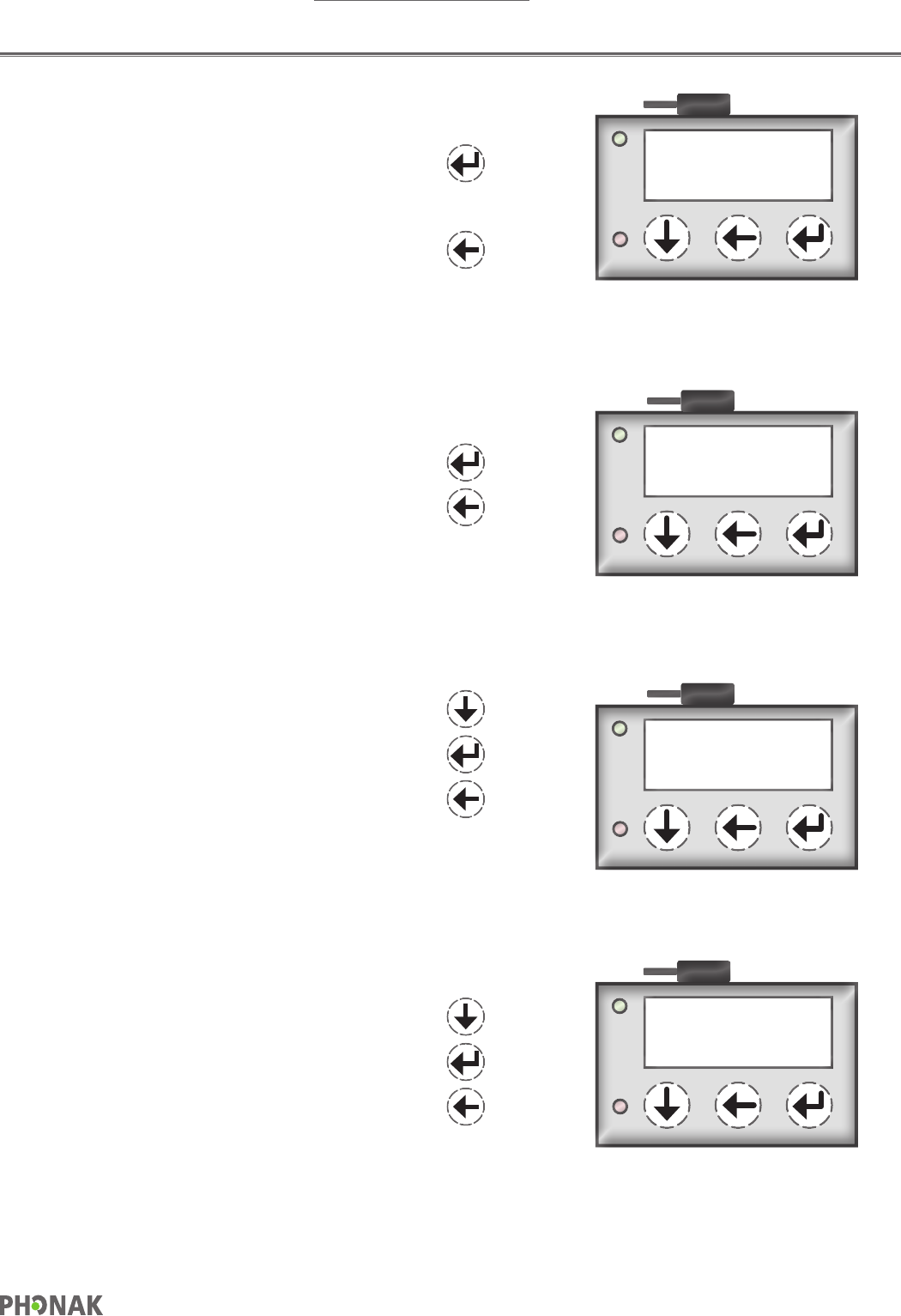
File: 000.000.015.286.pdf Version: 2
Title: Work Instruction Wireless Functional Test Device Page: 11 / 15
P3 DWA
P3 DWA RC Digital Wireless Accessory remote control test
• Use carriage return to turn on & off the test mode.
• The WFT device displays which DWA button was pressed.
• Use back arrow to return to the previous menu.
P3 DWA RC
GoTo NEXT
POWER
3.3V
LINK
ACT
Antenna
Palio3
P3 DWA
P3 DWA WFT Streaming test from the DWA to the WFT device
• Use carriage return to turn on & off the test mode.
• Use back arrow to return to the previous menu.
P3 DWA WFT
On
POWER
3.3V
LINK
ACT
Antenna
Palio3
WIRELESS FUNCTIONAL TEST
Palio2
• Use down arrow to scroll between Palio3 & Palio2 test modes.
• Use carriage return to select.
• Use back arrow to return to the previous menu.
P2
P2 HI RC Hearing instrument remote control test
• Use down arrow to decrease the volume.
• Use carriage return to change the program.
• Use back arrow to return to the previous menu.
Palio2
Vol-down Prog
POWER
3.3V
LINK
ACT
WIRELESS FUNCTIONAL TEST
Antenna
Palio3
Functional Test
Palio2
POWER
3.3V
LINK
ACT
WIRELESS FUNCTIONAL TEST
Antenna
Palio3

File: 000.000.015.286.pdf Version: 2
Title: Work Instruction Wireless Functional Test Device Page: 12 / 15
Declaration of conformity
Hereby Phonak AG declares that this Phonak product is in compliance with the essential requirements of the Radio and Telecommunications
Terminal Equipment Directive 1999/5/EC.
The full text of the Declaration of Conformity can be obtained from the manufacturer.
Notice 1:
This device complies with Part 15 of the FCC Rules and with RSS-210 of Industry Canada. Operation is subject to the following two conditions:
1) this device may not cause harmful interference, and
2) this device must accept any interference received, including interference that may cause undesired operation.
Ce produit répond aux exigences de la section 15 de la réglementation FCC et à la norme RSS-210 d’Industrie Canada. Son fonctionnement est
soumis aux deux conditions suivantes:
(1) cet appareil ne doit pas causer d’interférences nuisibles, et
(2) cet appareil doit accepter toutes les interférences reçues, y compris celles pouvant provoquer un fonctionnement préjudiciable.
Notice 2:
Changes or modifications made to this device not expressly approved by Phonak may void the FCC authorization to operate this device.
Compliance Information
6
Europe:
Notice 3:
This device has been tested and found to comply with the limits for a Class B digital device, pursuant to Part 15 of the FCC Rules and ICES-003
of Industry Canada.
These limits are designed to provide reasonable protection against harmful interference in a residential installation.
However, there is no guarantee that interference will not occur in a particular installation. If this device does cause harmful interference to radio or
television reception, which can be determined by turning the equipment off and on, the user is encouraged to try to correct the interference by one
or more of the following measures:
• Reorient or relocate the receiving antenna.
• Increase the separation between the device and receiver.
• Connect the device into an outlet on a circuit different from that to which the receiver is connected.
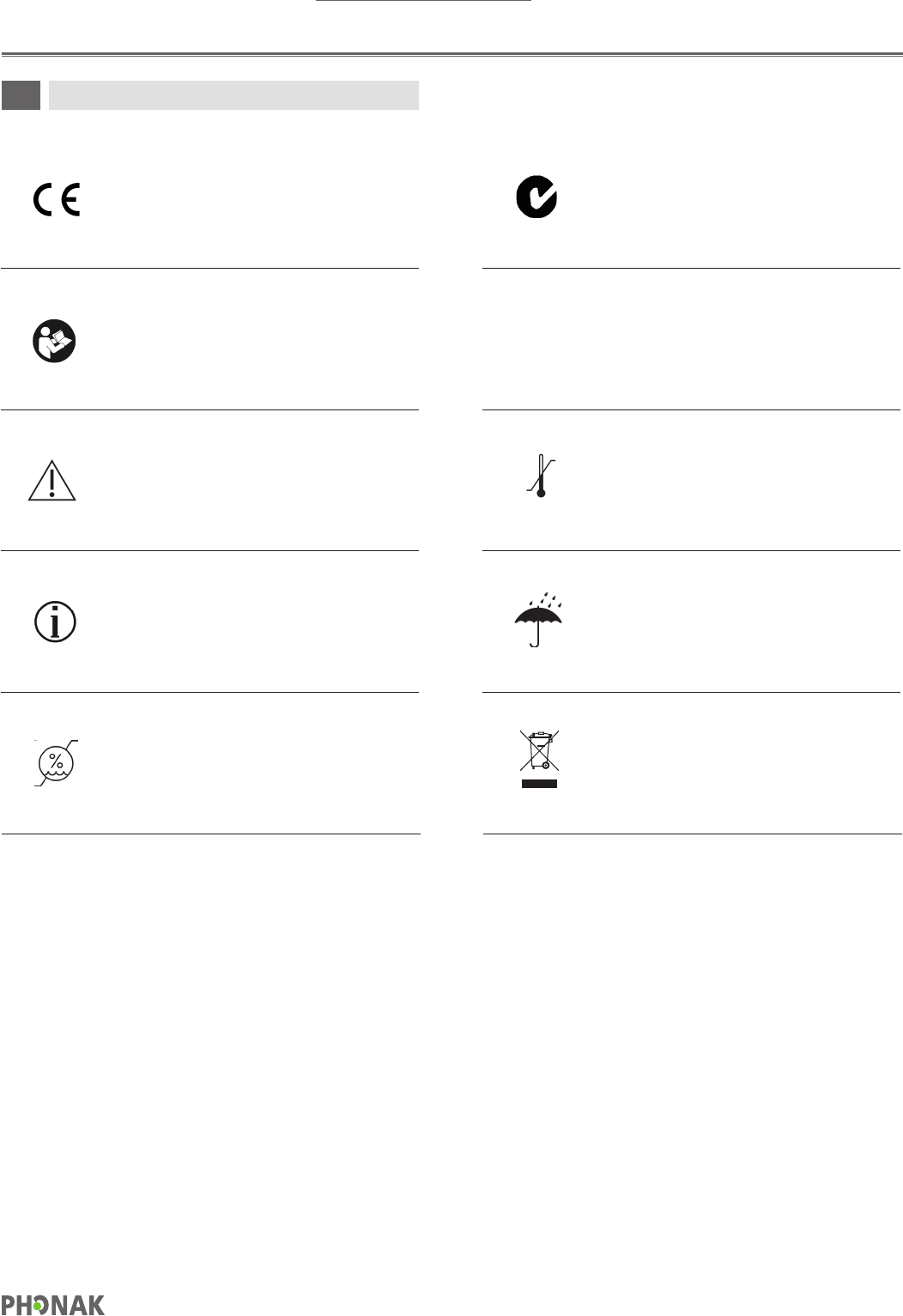
File: 000.000.015.286.pdf Version: 2
Title: Work Instruction Wireless Functional Test Device Page: 13 / 15
Information and Description of Symbols
7
With the CE symbol, Phonak AG confirms that
this Phonak product meets the requirements
of the R&TTE Directive 1999/5/EC on radio and
telecommunications equipment
EMC and radio communications compliance label
Australia.
This symbol indicates that it is important for the
user to read and take into account the relevant
information in this user guide.
Operating
conditions
The device is designed such that it functions
without problems or restrictions if used as
intended, unless otherwise noted in this user
guide.
This symbol indicates that it is important for the
user to pay attention to the relevant warning
notices in these user guides.
Temperature transport and storage:
–20° to +60° Celsius
(–4° to +140° Fahrenheit).
Temperature operation:
15° to 40° Celsius
(+60° to +104° Fahrenheit)
Important information for handling and product
safety. Keep dry
Humidity transportation and storage:
<90% (non-condensing).
Humidity operation:
<95% (non condensing)
The symbol with the crossed-out garbage bin is to
make you aware that this device may not be thrown
away as normal household waste.
Please dispose of old or unused device, at waste
disposal sites intended for electronic waste, or
return it to your group company for disposal.
Proper disposal protects the environment and health.
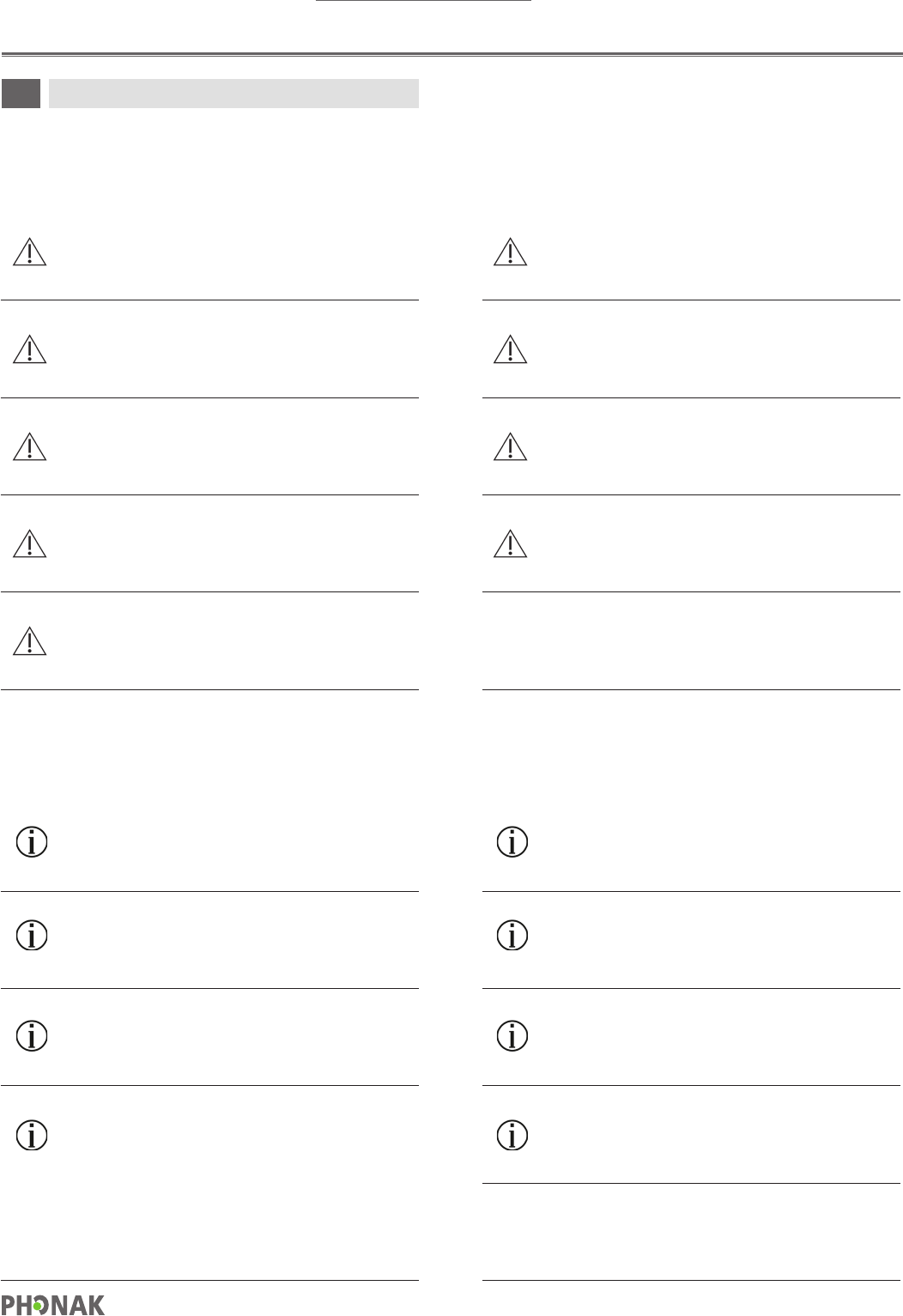
File: 000.000.015.286.pdf Version: 2
Title: Work Instruction Wireless Functional Test Device Page: 14 / 15
Hazard warnings
Important Safety Information
8
The following pages contain important safety information.
For persons with active implantable medical devices
(i.e. pacemakers, defibrillators, etc.) the use of this device
is not permitted.
Only use accessories approved by Phonak AG, to avoid
any electrical shock.
Keep this device out of reach of children and mentally
challenged people or pets.
Using the device, its connectors or cables in any way
contradictory to their intended purpose as described in
this user guide can cause injury.
Changes or modifications to the device that were not
explicitly approved by Phonak are not permitted. Phonak
is not responsible for situations resulting from a modified
device.
The mini-USB port is to be used for the described
purpose only.
Opening the device might damage it. If problems occur
which cannot be resolved by following the remedy
guidelines consult your Phonak representative.
Do not use the device in explosive areas (mines or
industrial areas with danger of explosions, oxygen rich
environments or areas where flammable anesthetics are
handled) or where electronic equipment is prohibited.
Dispose of electrical components in accordance with your
local regulations.
Information on product safety
Protect the device from excessive moisture or heat Keep the device of at least 10 cm away from any
kind of magnets.
Do not drop the device. Dropping it onto a hard surface
can damage the device.
Do not connect an USB cable exceeding 3 meters (9 feet)
in length to the device.
Protect the device connectors and plugs from dirt and
debris. Clean the device using a damp cloth. Never use
household cleaning products (washing powder, soap, etc.)
or alcohol to clean the device. Never use a microwave or
other heating devices to dry the device.
The mini-USB port is to be used for the described
purpose only.
The digitally-coded, inductive transmission technology
used in the device is highly reliable and experiences
virtually no interference from other devices. It should be
noted, however, that when operating the hearing system
near computer equipment, larger electronic installation or
other strong electromagnetic fields, it may be necessary
to be at least 60 cm (24”) away from the interfering
device to ensure proper operation.
When the device is not in use, disconnect from power
cable.
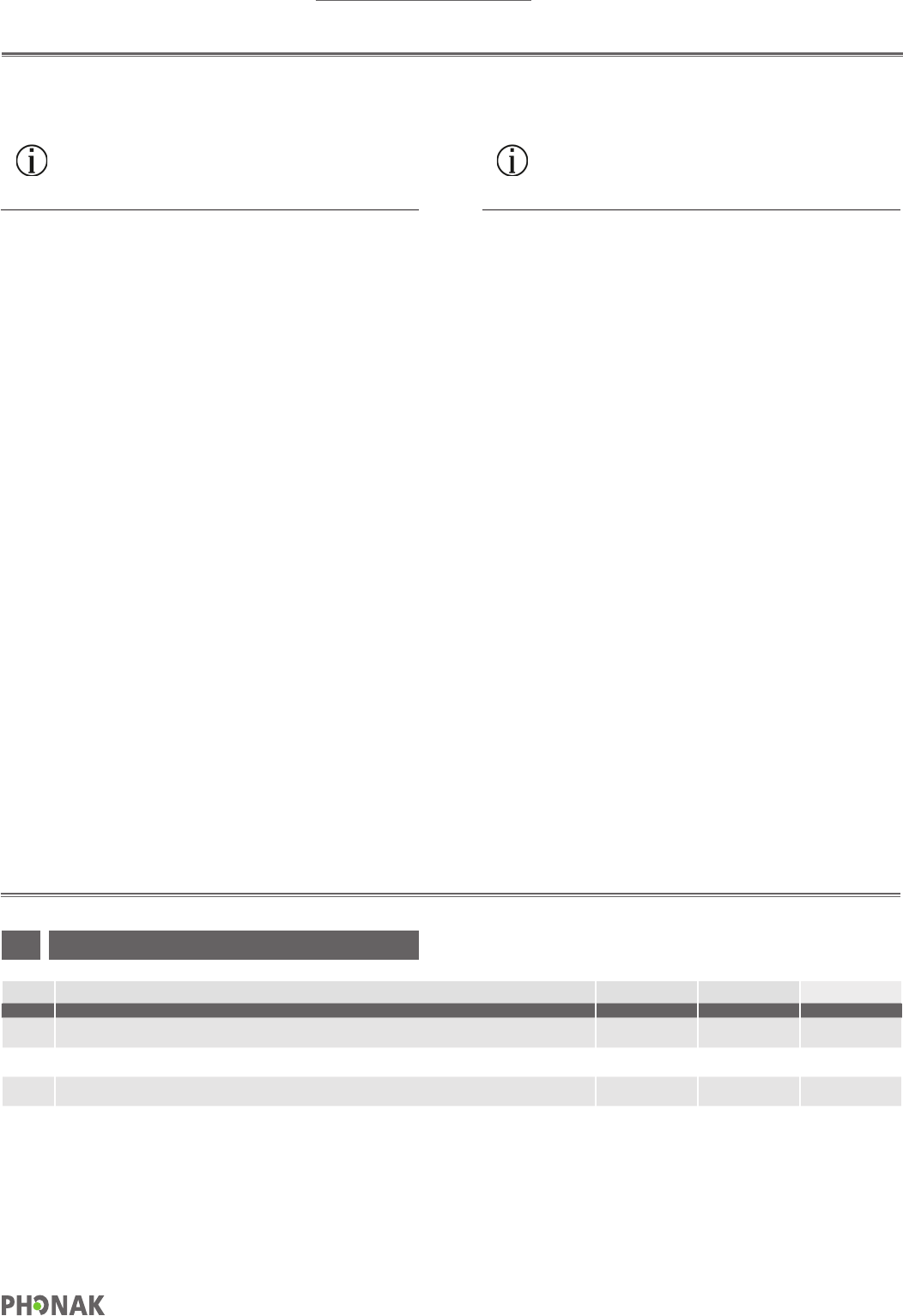
File: 000.000.015.286.pdf Version: 2
Title: Work Instruction Wireless Functional Test Device Page: 15 / 15
Other Important Information
If you use several devices in the same building,
be aware that their inductive field can disturb one ano-
ther if within a range of 2 meters (6 feet).
This may even occur when used in different rooms.
High-powered electronic equipment, larger electronic
installations and metallic structures may impair and
significantly reduce the operating range.
Version: Details: Written: Approved: Released:
1 First Release see page 1 see page 1 see page 1
2 Added French text page 12 (Notice 1) 2015-05-26
11mgraeter
Revision History